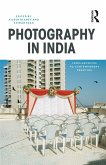Nineteenth-century Iran was an ocularcentered society predicated on visuality and what was seen and unseen, and photographs became liminal sites of desire that maneuvered "betwixt and between" various social spaces-public, private, seen, unseen, accessible, and forbidden-thus mapping, graphing, and even transgressing those spaces, especially in light of increasing modernization and global contact during the nineteenth and early twentieth centuries. Of primary interest is how photographs negotiated and coded gender, sexuality, and desire, becoming strategies of empowerment, of domination, of expression, and of being seen. Hence, the photograph became a vehicle to traverse multiple locations that various gendered physical bodies could not, and it was also the social and political relations that had preceded the photograph that determined those ideological spaces of (im)mobility. In identifying these notions in photographs, one may glean information about how modern Iran metamorphosed throughout its own long durée or resisted those societal transformations as a result of modernization.
Dieser Download kann aus rechtlichen Gründen nur mit Rechnungsadresse in A, B, BG, CY, CZ, D, DK, EW, E, FIN, F, GR, HR, H, IRL, I, LT, L, LR, M, NL, PL, P, R, S, SLO, SK ausgeliefert werden.









